The latest Design Showcase instalment features an interview with the Rev Dr Joel Scandrett, the Executive Editor of “To Be A Christian,” in which we talk catechisms, Anglicanism, J. I. Packer, and the design elements of this exciting new resource for the church (and not just Anglicans).
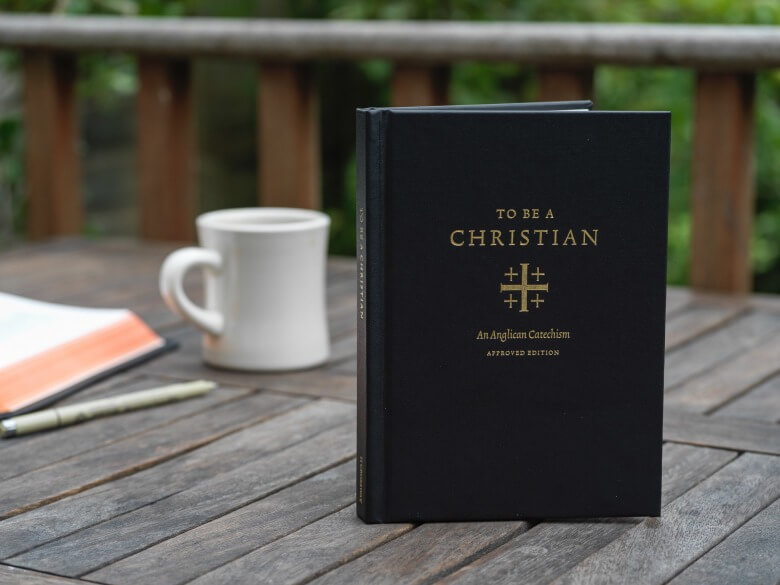
How does To Be a Christian: An Anglican Catechism (TBAC) differ from the 1662 Catechism in the Book of Common Prayer? And how would you differentiate the work from previous catechisms, including the Heidelberg, Westminster, and most recently, New City?
The most obvious difference is that TBAC is much larger and more extensive than the 1662 Catechism. This reflects a basic difference in their intended purpose. The 1662 comprises 24 questions-and-answers (Q&As) for children preparing for confirmation. By contrast, TBAC has 368 Q&As and is intended for adult and youth formation in a variety of contexts, including but not limited to confirmation. Featuring exposition of each clause of the Apostles’ Creed, Lord’s Prayer, and Ten Commandments, as well as a section on the sacraments, its teaching is both more in-depth and more comprehensive. Each Q&A is accompanied by representative Scripture selections for Bible study. TBAC also includes an opening section on the Gospel, which we considered essential for any catechism in our increasingly post-Christian context. Another chief difference is that many Q&As in TBAC emphasize the practical moral and spiritual implications of Christian doctrine, not simply the mastery of doctrinal content.
However, there are very important points of continuity between TBAC and the 1662 Catechism. The content of both catechisms is based upon the ancient “pillars” of Christian catechesis: the Apostles’ Creed (and the sacraments), the Lord’s Prayer, and the Ten Commandments. Moreover, TBAC is theologically dependent upon and congruent with the theology of the 1662 Catechism. This is especially evident in the section on the sacraments, where we frequently quote the 1662 verbatim. In this respect, one could say that TBAC is the seed of the 1662 Catechism come to full flower.

As for comparisons to the catechisms of other Reformation traditions, there are clear similarities insofar as they also follow the traditional pattern of the pillars of catechesis. TBAC is most different from Westminster, with its emphasis upon Calvinist distinctives like election and covenant theology. By contrast, and in keeping with Anglican tradition, TBAC features exposition of the Apostles’ Creed, which offers a “big tent” emphasis on cardinal Christian doctrines. Luther’s Small Catechism comes closer, but is relatively light on exposition of the Creed. The closest analogue to TBAC is Heidelberg, which includes exposition of the Creed and has a similar structure. As for the New City Catechism, it is much shorter and does not follow the traditional structure.
In contrast to all these, TBAC has three main distinctives. First, as already mentioned, it is substantially longer and more in-depth. Second, it is explicitly Christocentric in its entire structure and orientation. And third, it follows a different sequence that is oriented toward growth in Christian maturity. I’ll discuss these last two points below.

What was the process like for you working with Dr. Packer?
Dr. Packer was a marvel to behold in action. His mastery of Scripture and the Anglican tradition were on display throughout the process, and his sensitivity to the inherent tensions of Anglican “reformed catholicity” was invaluable. While many were involved in the project, he was the “master catechist” in our midst who kept us on target and within the bounds of orthodox Anglican theological, spiritual, and moral teaching. Working with him on this project was one of the great honors of my life.
As to our process of writing, there were three main phases under the oversight of the Anglican Church in North America’s (ACNA) Committee for Catechesis: 1) drafting of the working edition, 2) gathering and vetting of feedback, and 3) revising and final editing of the approved edition. In the first phase, we assigned teams of highly qualified people to draft each of the three main sections (the gospel section was added later). These teams included a combination of theologians, clergy, and mature lay leaders representing the entire range of Anglican perspectives, from low-church Evangelicals to high church Anglo-Catholics. Dr. Packer and I were both involved in the initial writing, but took up editorial roles fairly early on: Dr. Packer as theological editor and I as executive editor. Together with the Committee, we worked to complete the first draft and distributed it for feedback to all ACNA churches. Over the next two years, we received a plethora of suggestions for revision, some of which were eccentric but many of which were excellent. In the final stage of the process, Dr. Packer and I worked closely with a team of ACNA theologians to vet these suggestions and painstakingly edit the final draft. It was a long and laborious process, but the end result was well worth it.
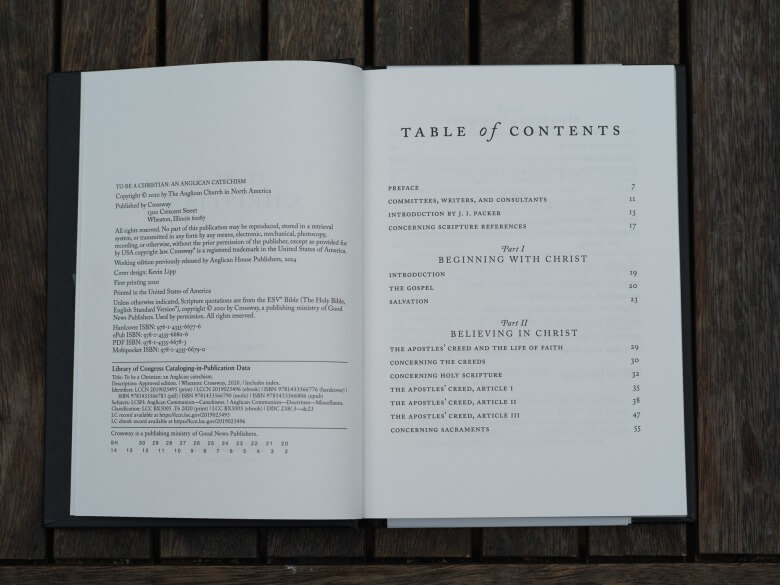
The catechism is centered on Christ through and through. Could you talk us through the four major sections and what each is intended to drive home to the individual being catechised?
Thank you! This is the truly distinctive feature of TBAC: it is entirely Christocentric in structure, content, and orientation. We undertook this catechism with the shared conviction that the goal of Christian discipleship is conformity to the image of Jesus Christ (Romans 8:29) founded upon the reality of our union with Christ in the Holy Spirit. This is the core theological assumption that informs the structure and developmental orientation of the entire work, as follows.
Following the introduction, TBAC opens with a section on the Gospel entitled “Beginning with Christ.” People must understand their fallen condition of separation from God apart from Jesus Christ, and the necessity of personal faith in Christ for their salvation and restoration to right relationship with God. The Gospel is the necessary starting point for a life of conformity to Jesus Christ. Thus Question 16 of TBAC sums up its entire purpose well:
Q. What does God desire to accomplish in your life in Christ?
A. God desires to free me from captivity to sin and transform me into the image of Jesus Christ, by the power of his Holy Spirit.
The second section of TBAC is entitled “Believing in Christ” and features an exposition of the Apostles’ Creed. Here we focus on the conformity of our minds to the reality of Jesus Christ, who is the Son of God the Father, the one through whom all things were made, who became incarnate for our salvation, sent us the Holy Spirit, united us to himself in baptism, formed us into his Body the church, and will raise us to new life with him on the last day. This is the “rule of faith.” To believe IN Christ, to entrust ourselves personally to him, requires that we know both who he is and what he has accomplished for us and in us.

The third section of TBAC is entitled, “Belonging to Christ,” and focuses on the spiritual conformity of our hearts (will and passions) to Christ through an exposition of the Lord’s Prayer. Having established a foundation of faith in Jesus Christ, we grow in our love for him through spiritual disciplines of prayer, praise, repentance and forgiveness, all for the sake of God’s kingdom. These disciplines include both personal devotion and corporate worship, which includes the liturgical and sacramental life of the church. TBAC refers to this fully-orbed structure of spiritual disciplines as a “rule of prayer,” a pattern by which the whole form of our spiritual lives is brought into conformity to Jesus.
This leads us to the fourth and final section of TBAC, “Becoming Like Christ.” Having established a foundation of faith in Christ, and following a pattern of spiritual devotion to Christ, Christian discipleship expresses itself through moral action: the love of God and neighbor. Accordingly, this section features an exposition of the Ten Commandments as the revelation of God’s will for human life. For those familiar with the term, our approach to the Ten Commandments strongly affirms the “third use” of the Law: not as a basis for our salvation, but as a guide to the way of life that God originally intended for human beings — a way of life on display in the life of Jesus. Accordingly, for each of the Ten Commandments, TBAC emphasizes both those sinful attitudes and actions which God’s Law prohibits and the Christlike attitudes and actions which it promotes, all for our growth in love for God and our neighbors.
I trust it is clear now how the structure of TBAC is both Christocentric and Christo-telic. It is organized around the telos, the direction and goal of a life of Christian discipleship, which is conformity to the image of Jesus Christ — the only true image of God the human race has ever known. In this respect, it is classically Anglican in that it takes its direction for Christian discipleship from the catechetical theology of the early church.
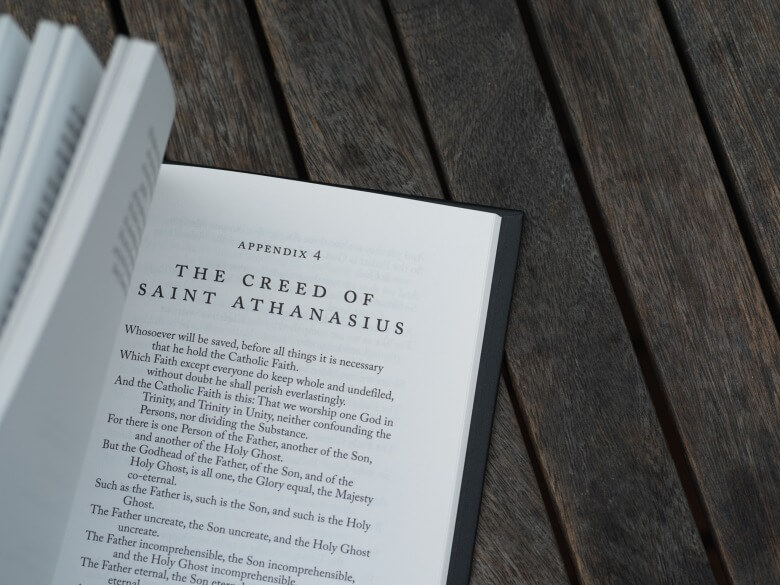
Does TBAC fit comfortably only in an orthodox Anglican setting, or was the intent to reach a broader stratum of Christianity?
TBAC was developed in response to two related realities that confront the church in the 21st century. The first is the failure of the American church in the grip of hypermodernity to form mature Christian disciples — disciples with a deep understanding and disciplined commitment to Christian faith, Christian spiritual practice (personal and corporate), and Christian character (personal and public). In this respect, TBAC is part of a larger effort to address this failure through the renewal of Christian catechesis. The second reality, which is related, is the fragmenting of the global Anglican Communion along the faultlines of a revisionist progressive theology that rejects the authority of Scripture and historic Christian teaching. In this respect, TBAC is intended as a statement of Anglican teaching that represents and supports the great majority of faithful Anglicans worldwide.

In respect to the first concern, any orthodox Christian will find in TBAC a clear, biblically grounded statement of historic Christian faith that will instruct them in the cardinal doctrines of their faith, essential practices for their spiritual life, and God-given ethical principles by which to lead their lives. I know a number of non-Anglicans who have read it with great benefit and appreciation. However, in respect to the second concern, readers will also find that TBAC is distinctly Anglican in a number of important respects. It upholds the Anglican church order of bishops, priests, and deacons. It affirms infant baptism. It affirms the “spiritual real presence” of Jesus Christ in the Lord’s Supper. While upholding Baptism and the Lord’s Supper as the only sacraments commanded by our Lord, it also acknowledges the sacramental character and place of marriage, confirmation, ordination, absolution, and anointing of the sick. Christians in the Reformed and Lutheran traditions will find many these familiar, though they might disagree with others. Those of a more baptistic and free church orientation will likely find these difficult to accept.

Why were the 39 Articles not included in the Appendixes, since these are fundamental to Anglican belief and culture?
For three reasons: first, because they are already included in the ACNA 2019 Book of Common Prayer (BCP), which is their traditional location. Second, because we did not want to introduce a separate body of content to new believers or newcomers to the Anglican tradition who are learning these things for the first time. That would be confusing. Third, because the Articles are not actually “fundamental to Anglican belief and culture” in certain respects. Many of them reflect the state church assumptions of the Church of England in the 17th century. Such assumptions do not apply in our context and might be strange and off-putting to the uninitiated. For all these reasons, we elected not to include them. However, we do cite the Articles at numerous points throughout TBAC, and direct readers to their location in the 2019 BCP.

Could you walk us through the design process?
Most of the design decisions were made for us by the ACNA Liturgy Task Force, which produced the 2019 BCP. The BCP was printed first and the design specs chosen by the Task Force were also used in the TBAC design in order to match the two books as closely as possible. The main difference in appearance was that TBAC’s cover is black while the 2019 BCP cover is red. These are colors that have been used in many Anglican “church books” over the years. Black is traditionally associated with penitential seasons and Jesus’ call to his disciples to die to themselves. That seemed an appropriate color for a catechism.

How were the final dimensions determined?
To conform to the dimensions of the 2019 BCP.
Who made the decision on font choice and size, and what determined that choice?
The interior design was also chosen to conform to the 2019 BCP, which was intended to achieve a beautiful, classically Anglican appearance.
What can you tell us about the grade of paper, and the binding style?
Here’s what the publisher told me: The paper is an acid-free natural shade trade book paper manufactured by Glatfelter, 50# and 400ppi. The binding is a smythe-sewn layflat hardcover, wrapped with a classic linen-textured book cloth, and foil stamped with gold.

What practical advice would you give to pastor/scholars in particular regarding how, when, and why to use TBAC inside, and outside, the church?
TBAC is a catechism for teen and adult learners and was developed with the intention of being taught and studied over a meaningful period of time (6-12 months) in a variety of contexts. An ideal period would be over the course of a school year. In a church context, it could be used for one-on-one discipleship with teens or adults, as the curriculum for a large group or small group study, or as part of a confirmation course. I know of churches that have used it in all these ways to great benefit.
However, TBAC was also written with nonbelievers in mind, whether churched or unchurched, and could very well serve as the followup “beta” instruction for seekers who desire more than an Alpha-level introduction to the Christian faith. We refer to this approach as “catechetical evangelism.” As in the early church, this approach welcomes seekers to join catechesis classes as they explore the Christian faith more deeply. While a nonbeliever could read through the catechism on their own, it would be better for them to do so in the context of such a course, or at least in conversation with a mature Christian.
For both contexts, we strongly recommend that the catechist — the person(s) leading the course of study — be mature believers who have themselves been sufficiently formed and are “able to teach.” Ideally, this would be a pastor or theologically educated lay person. While we hope to produce a catechist’s edition of TBAC that would provide explanations to the Q&As, that is still some distance in the future.



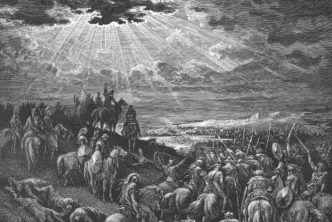
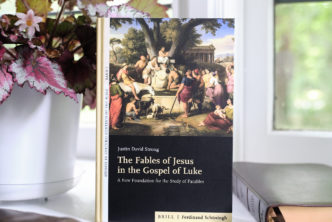

Is it available on Logos?